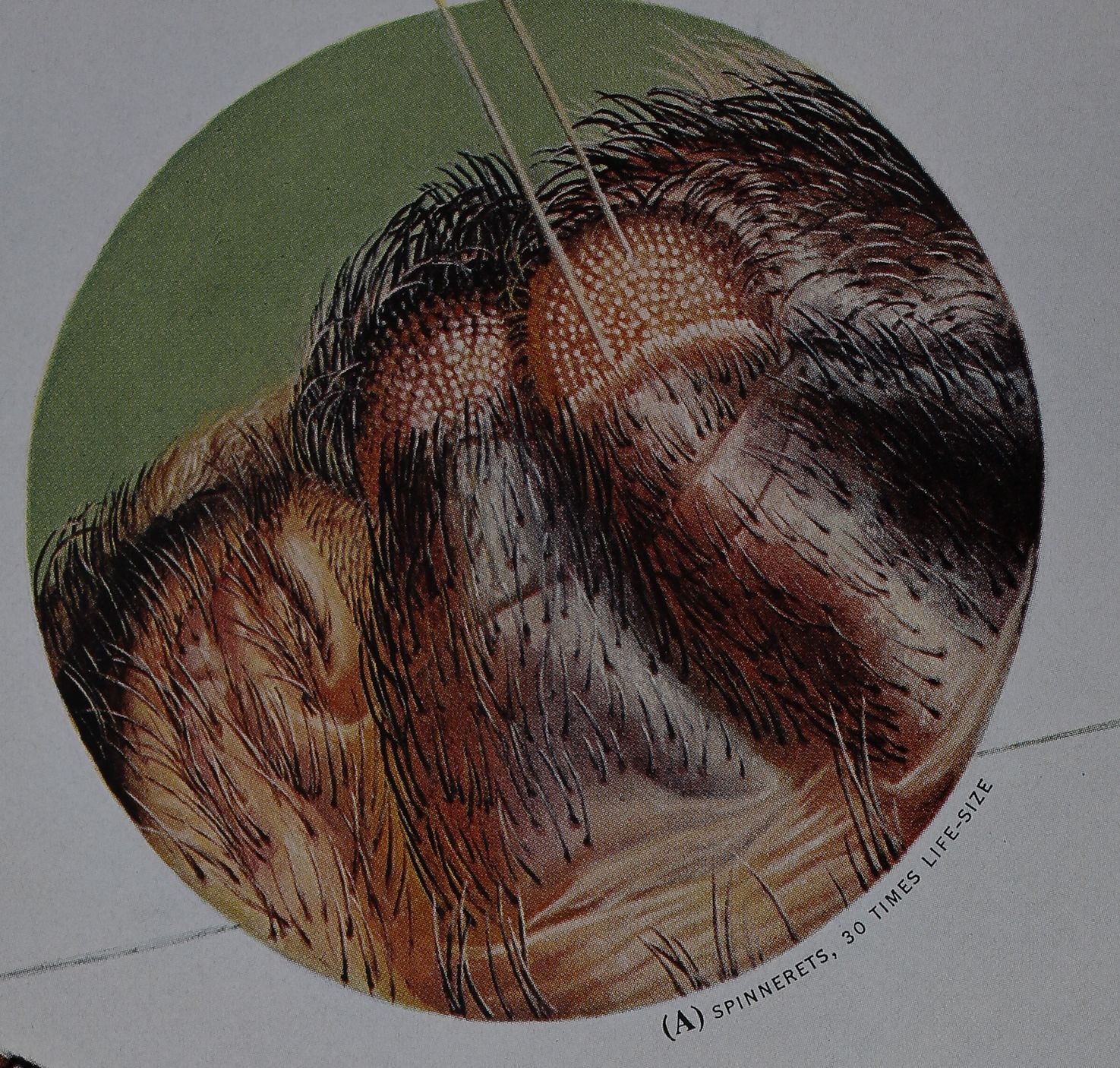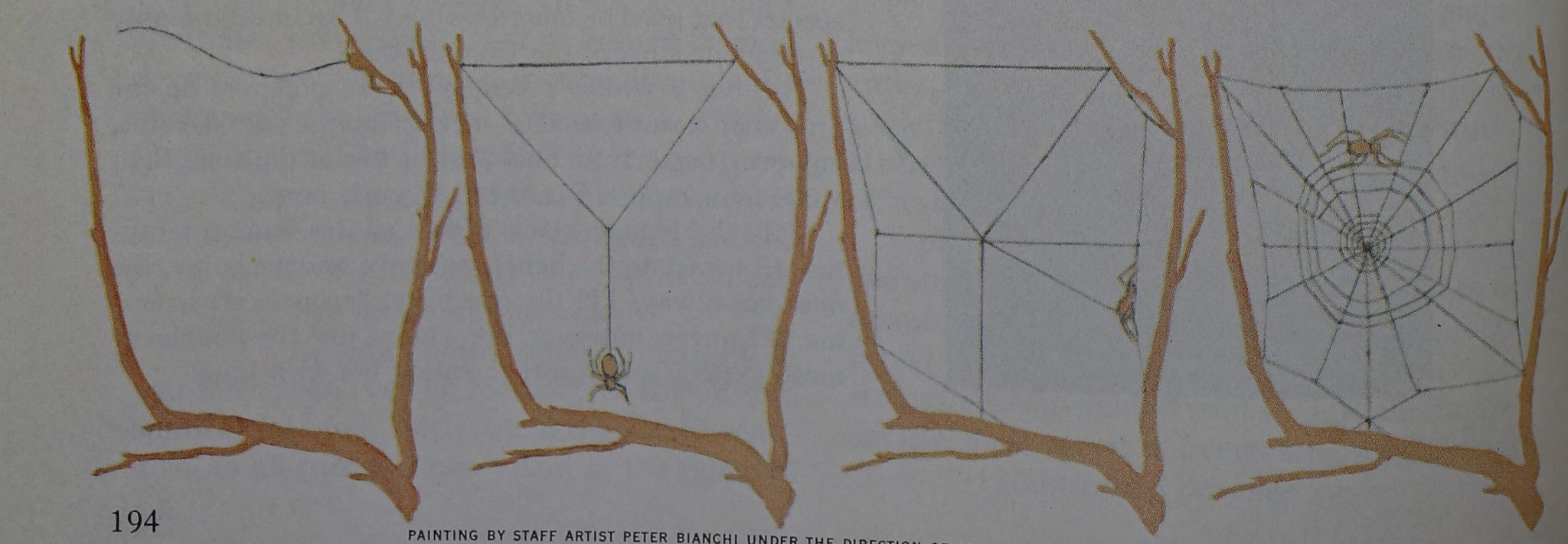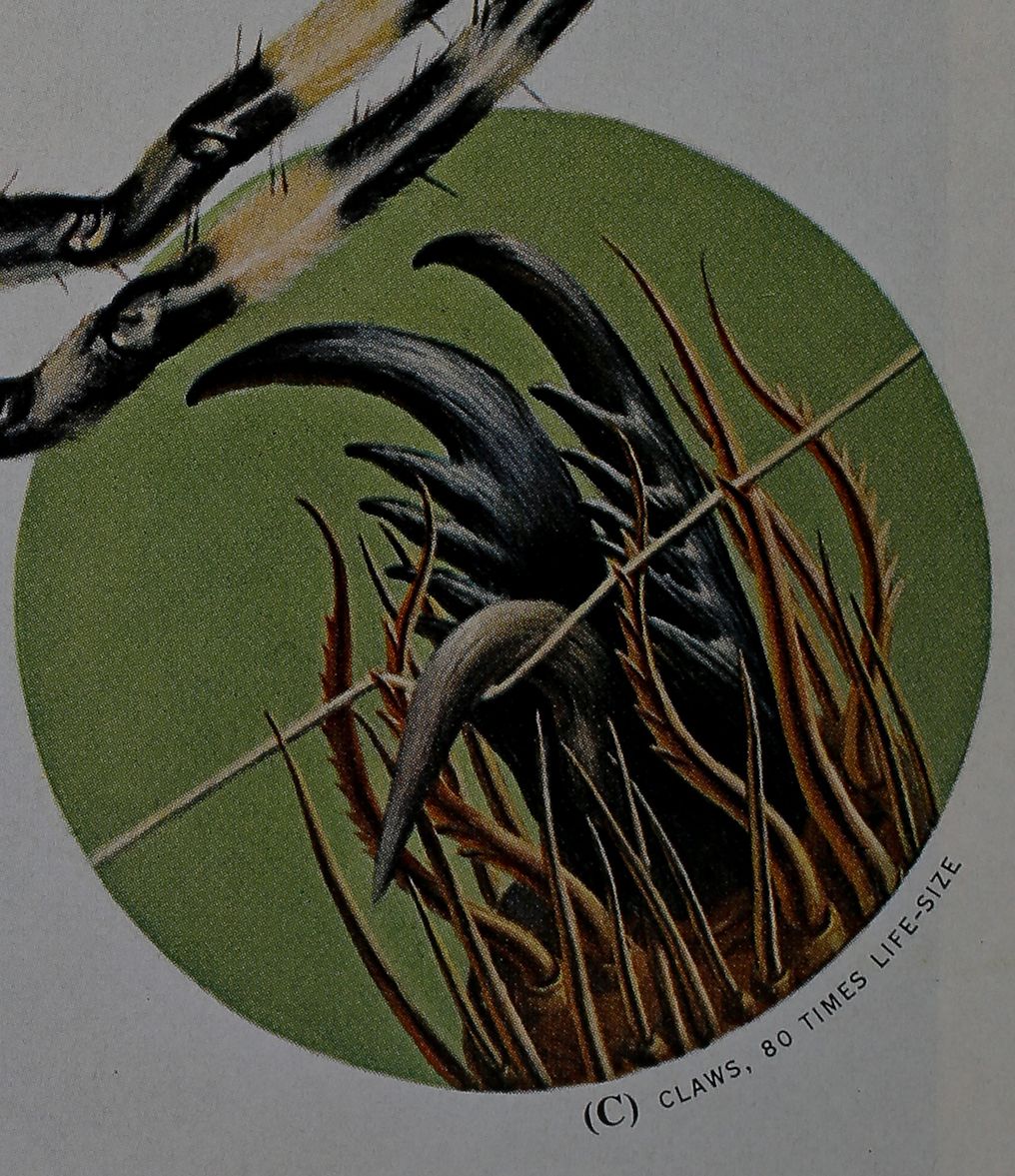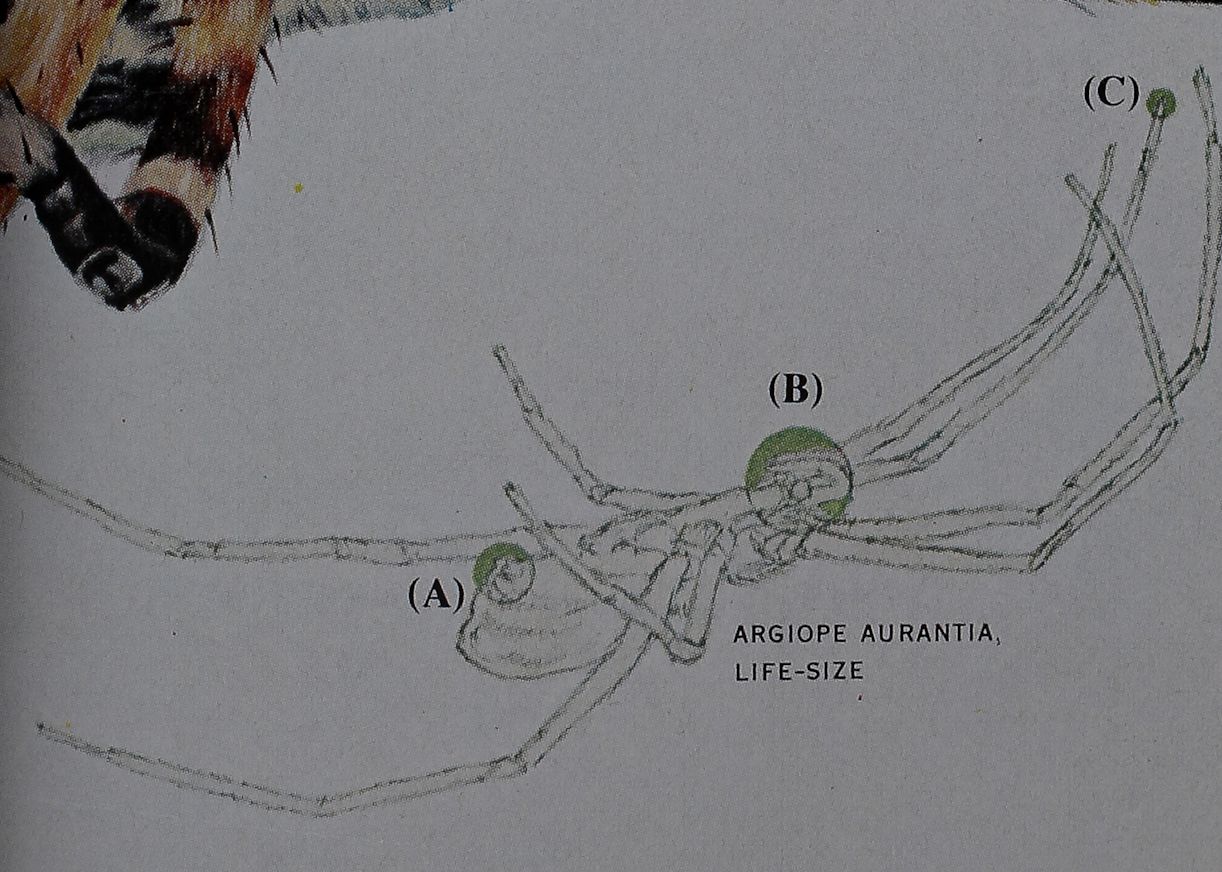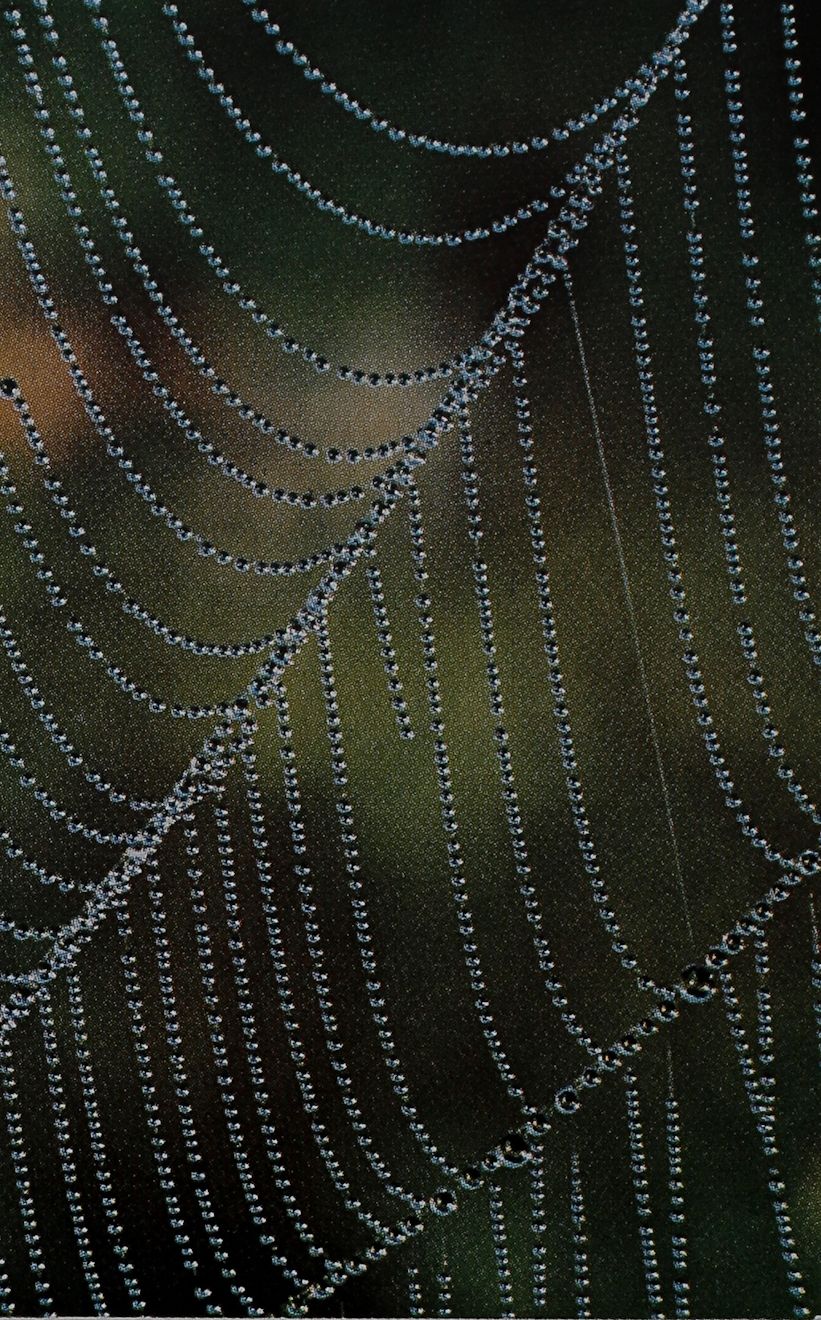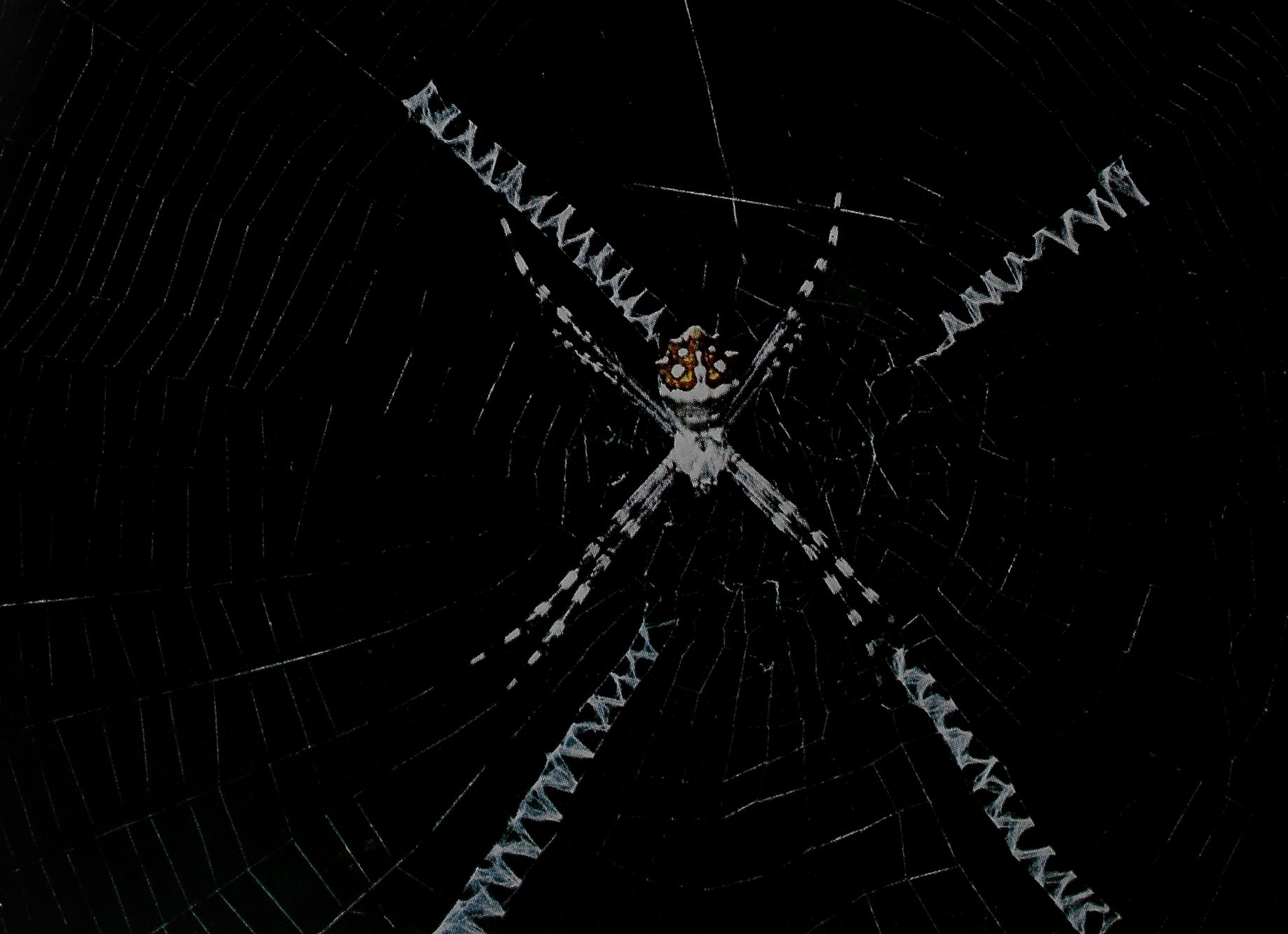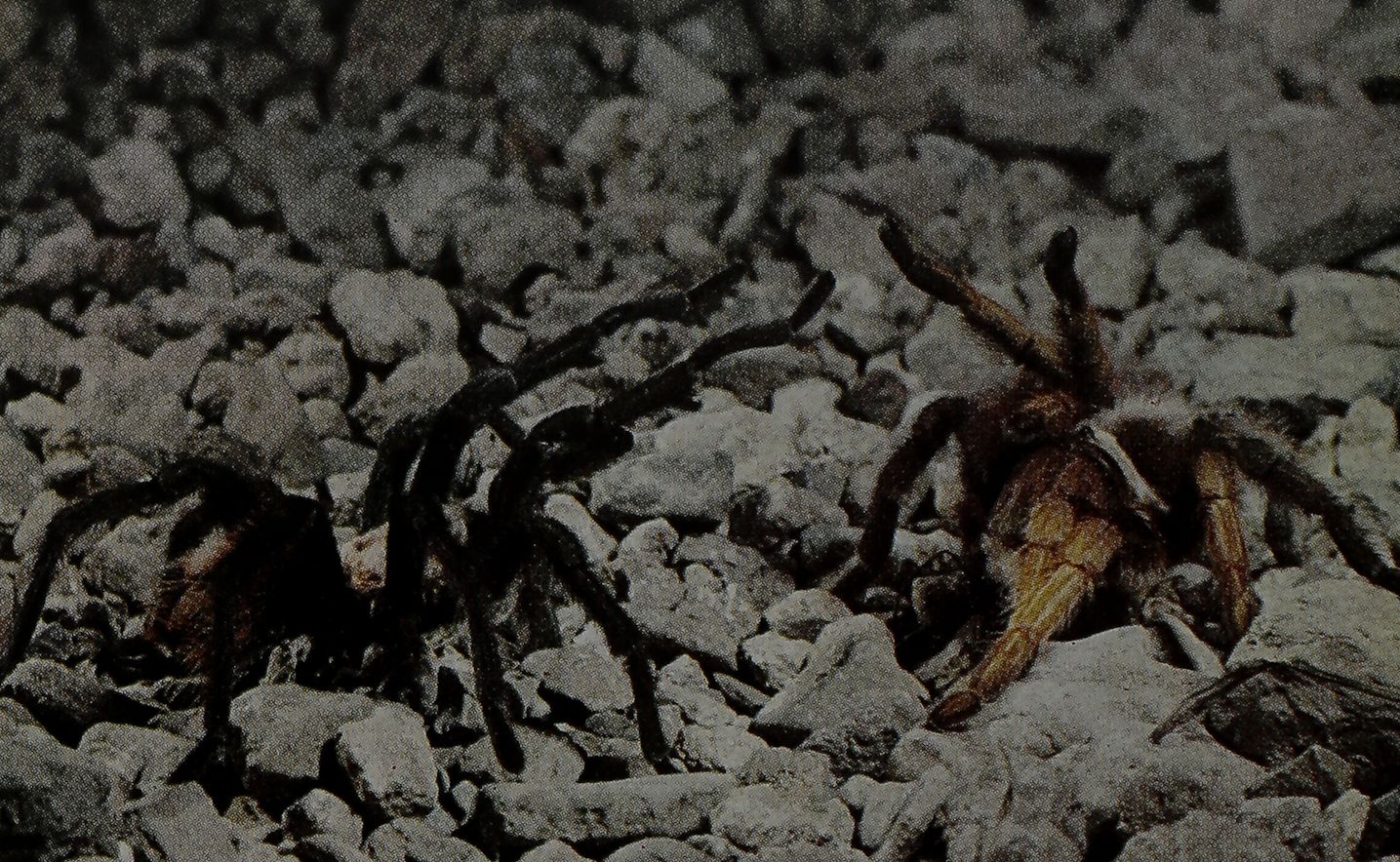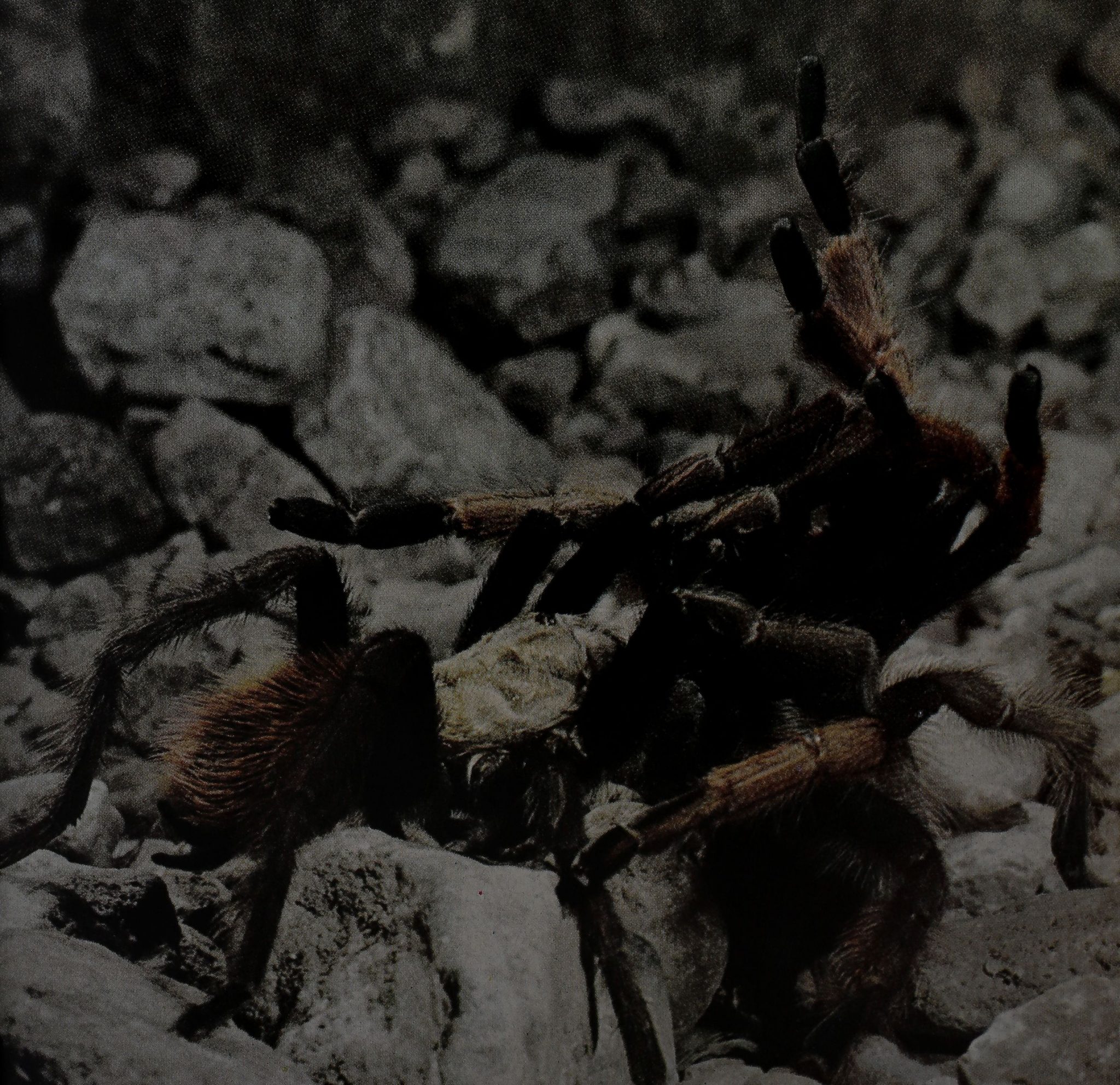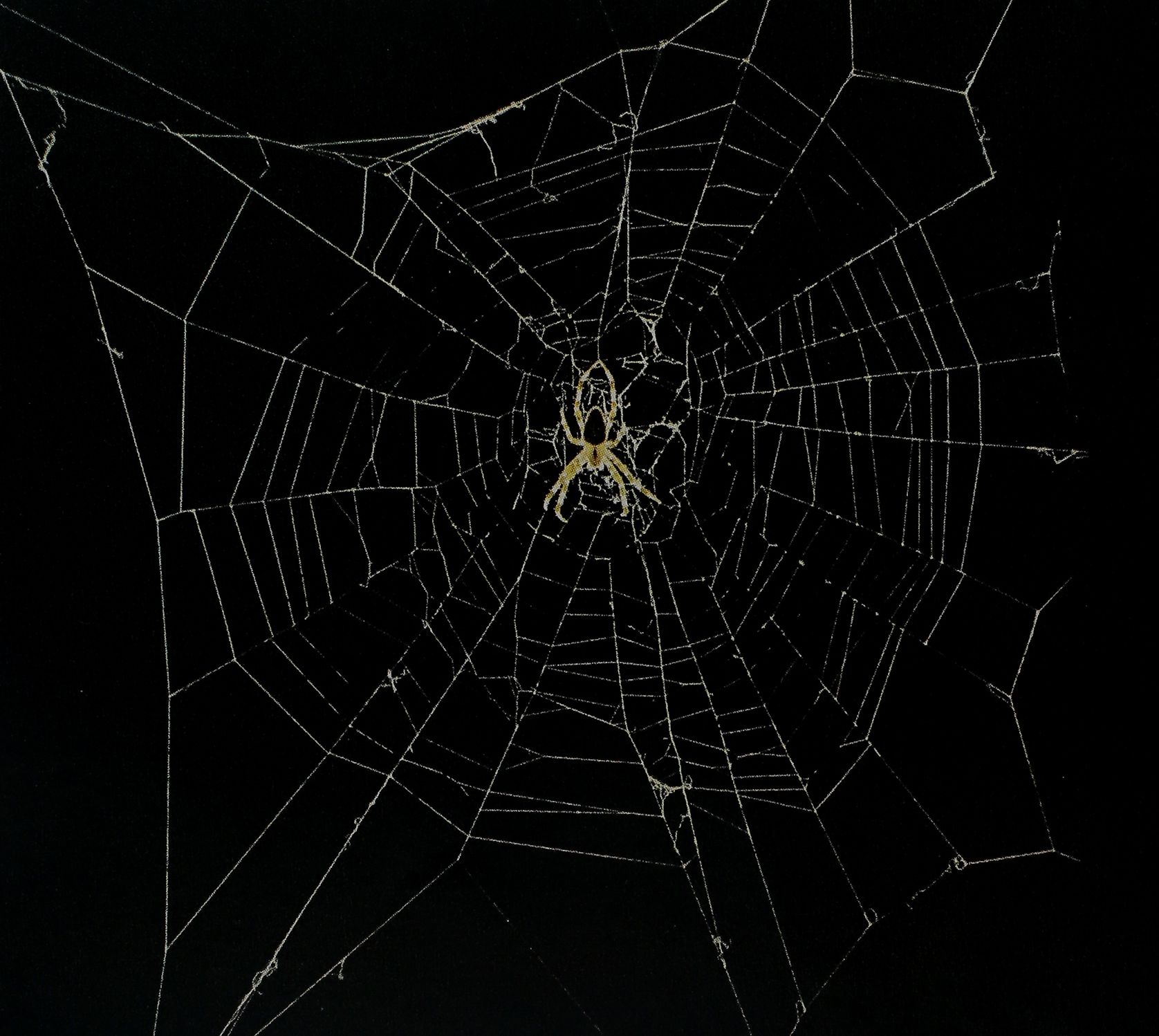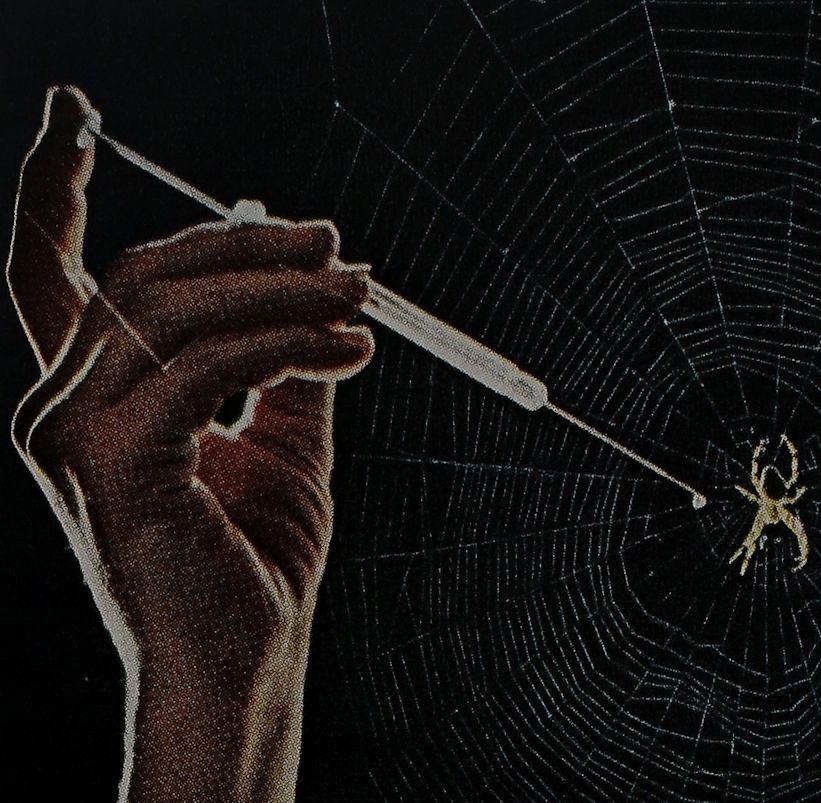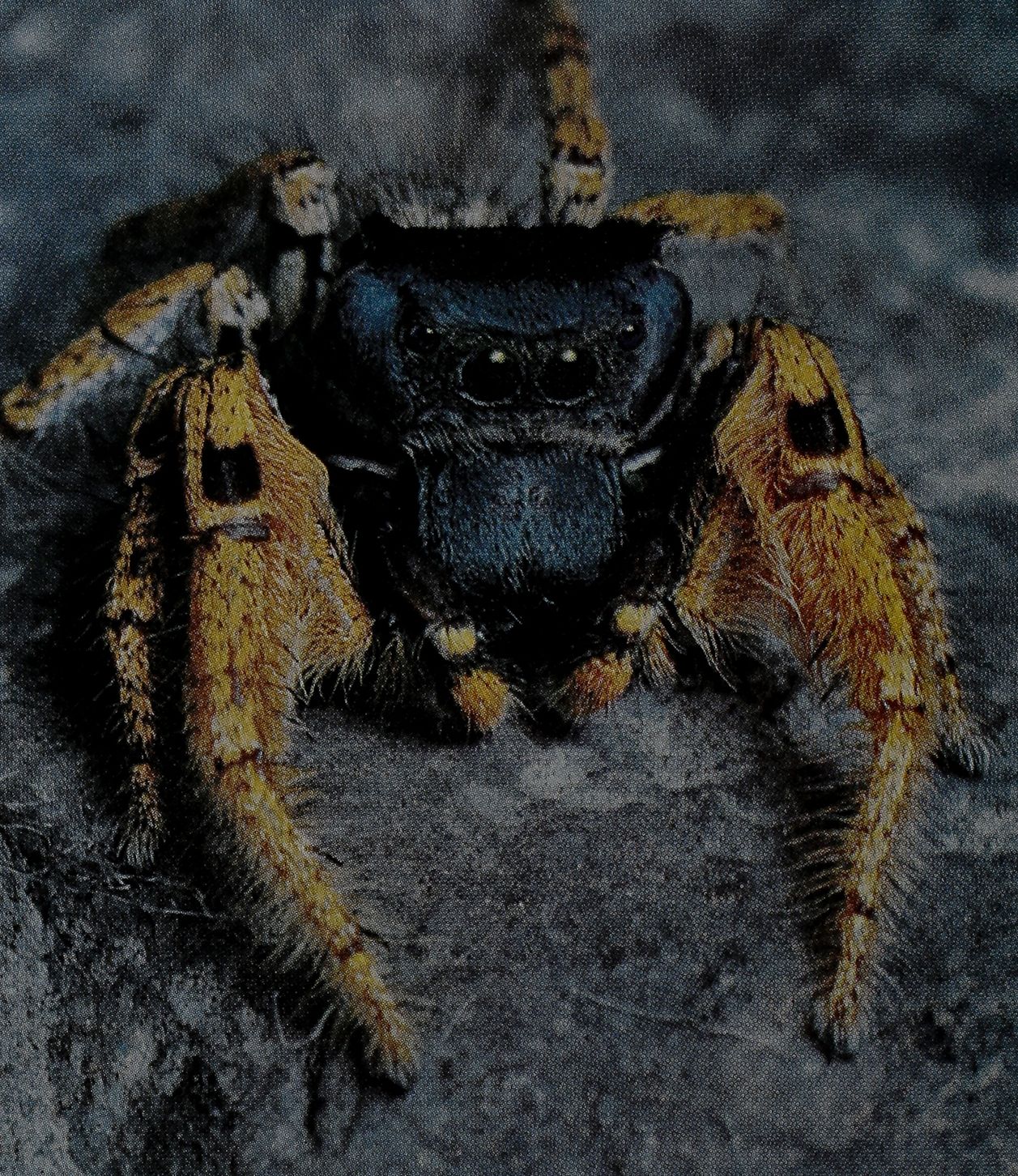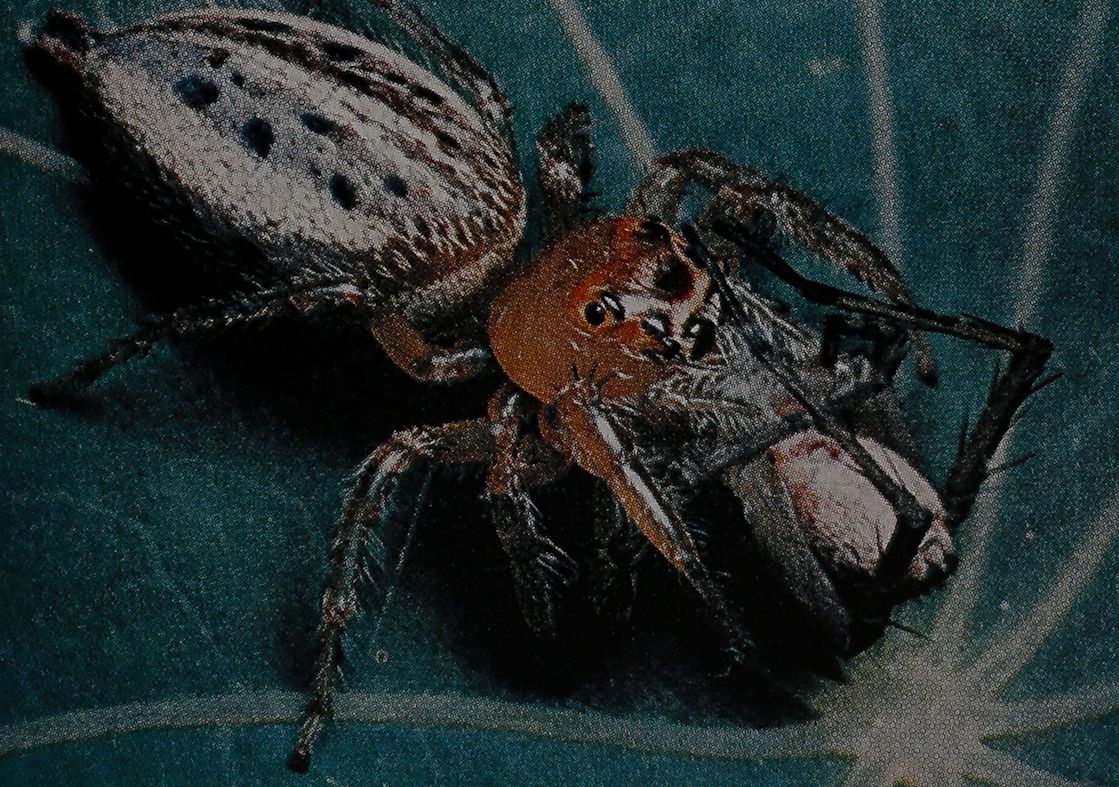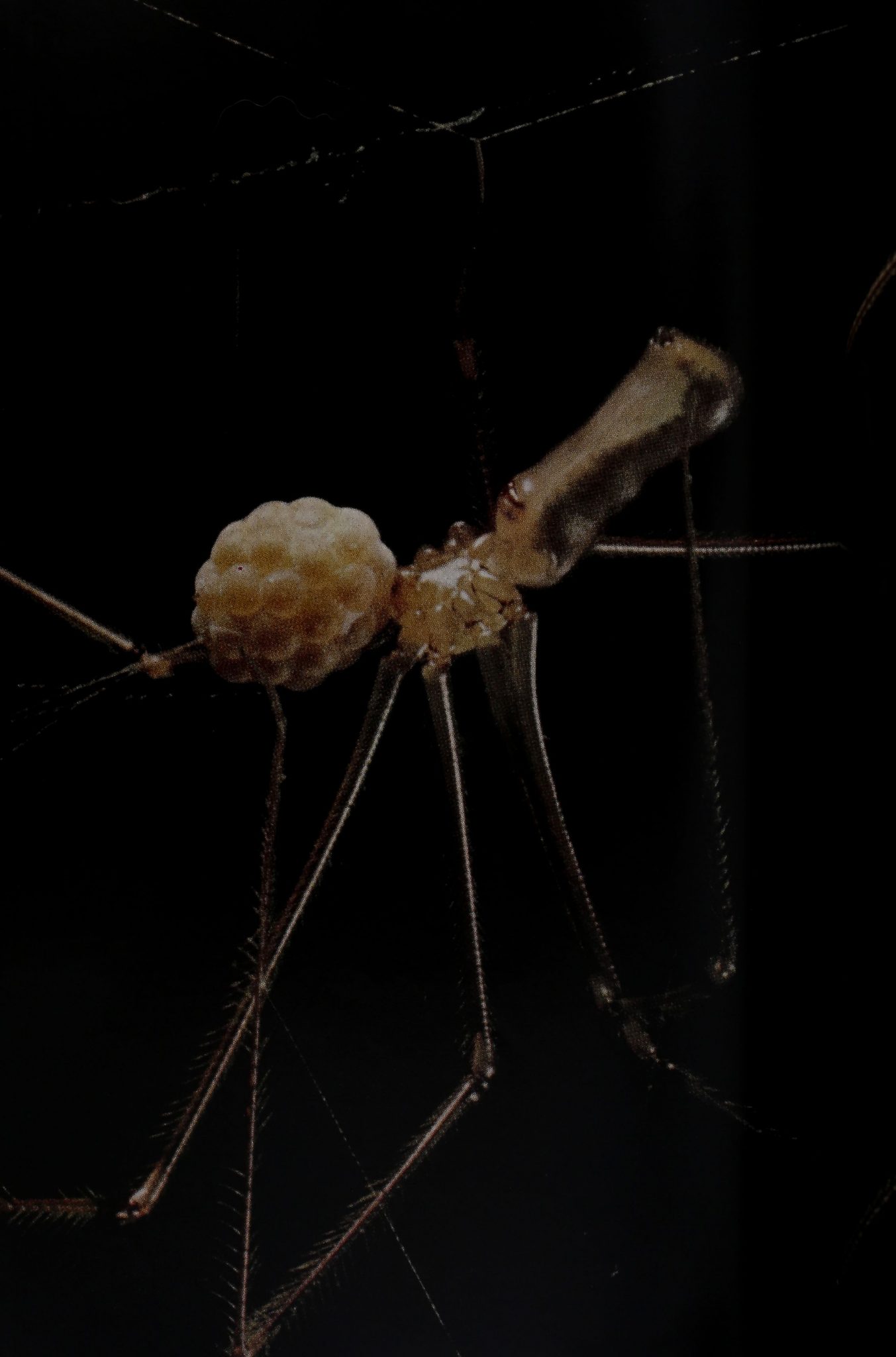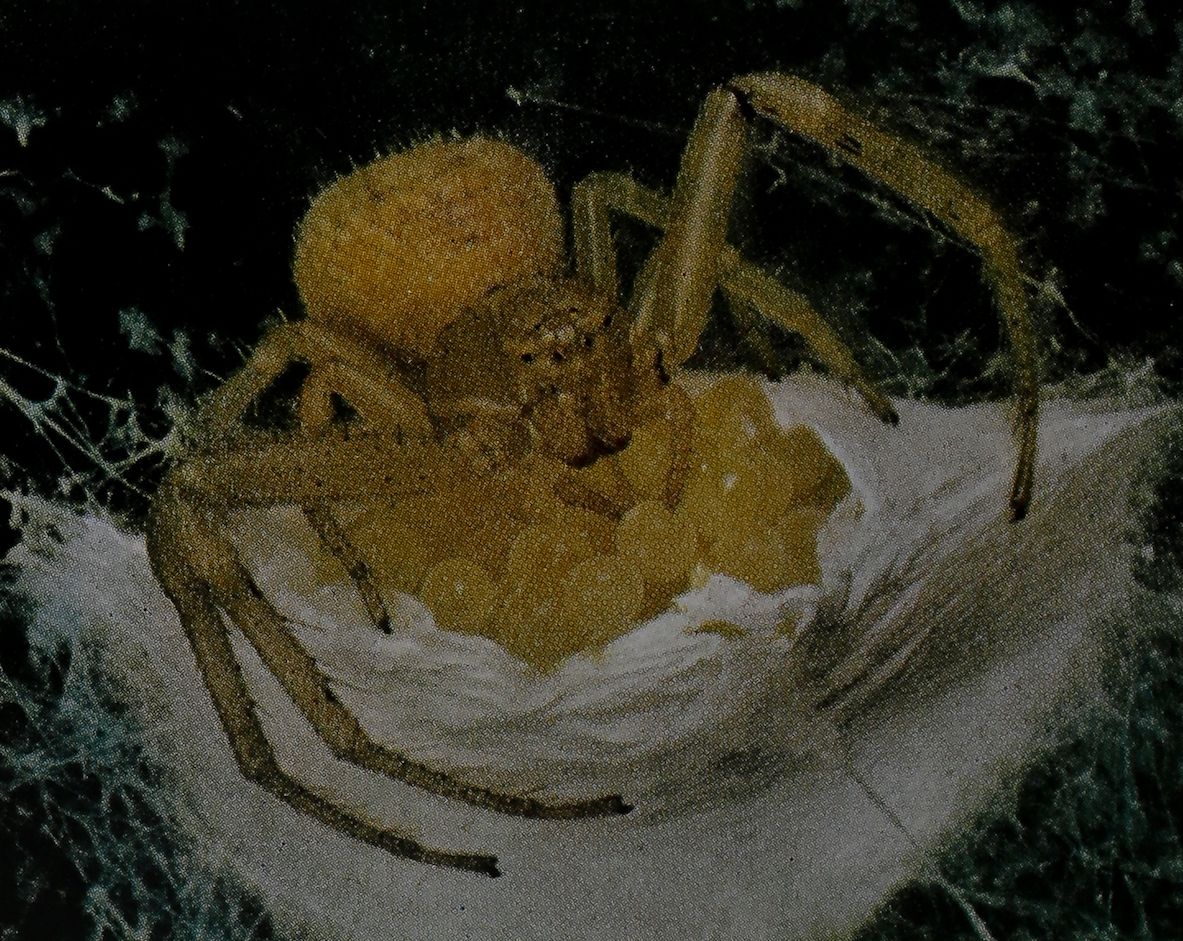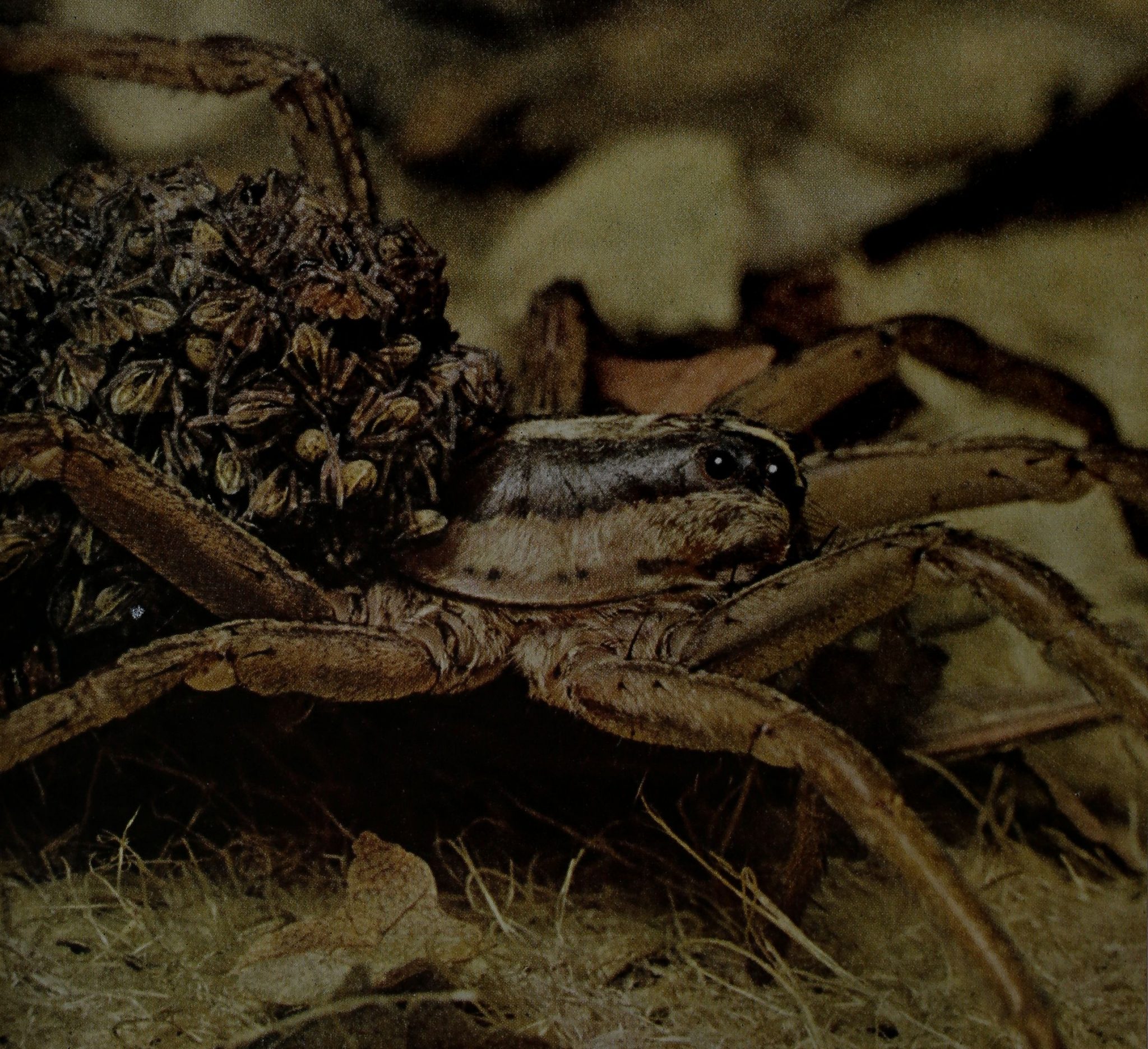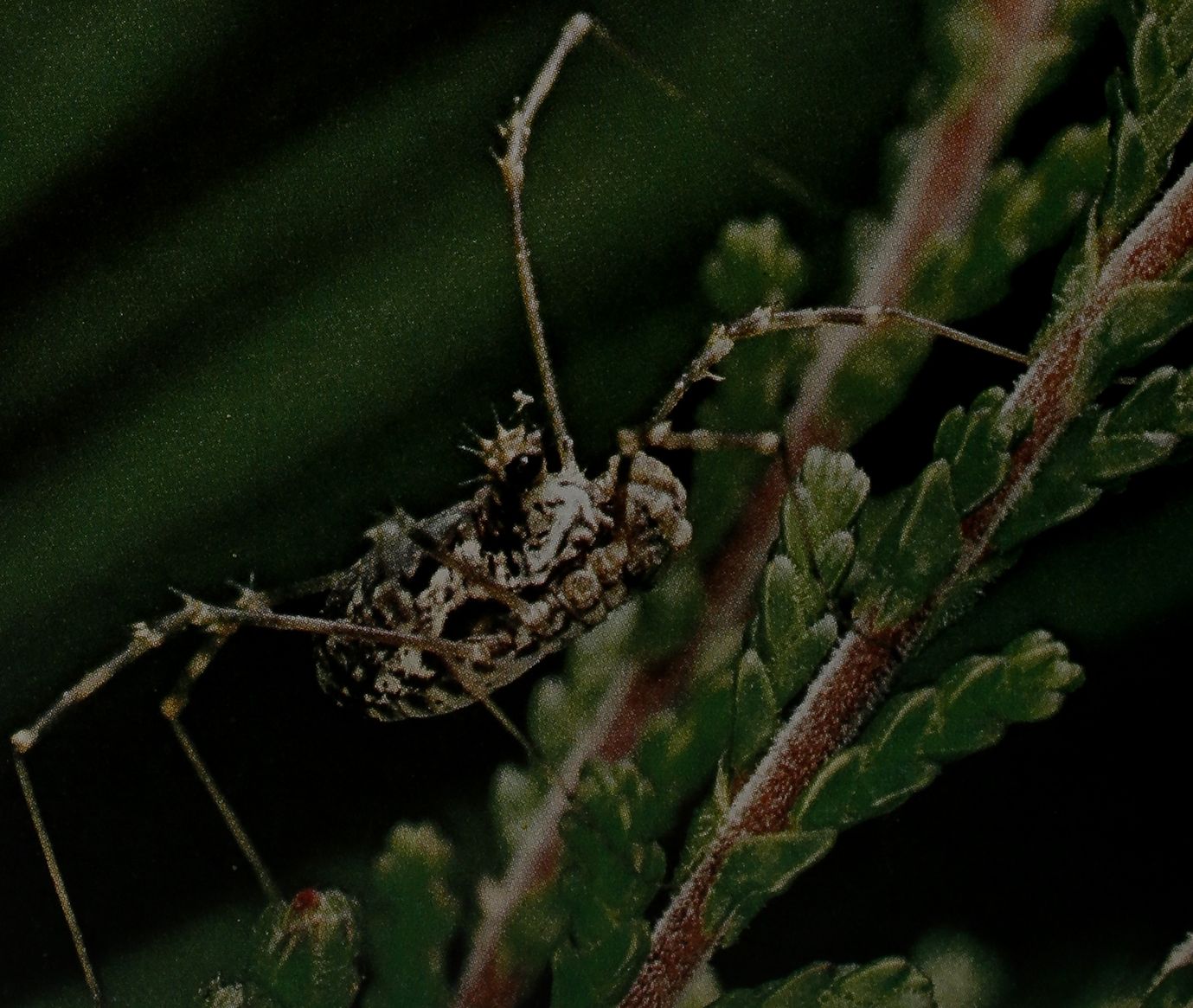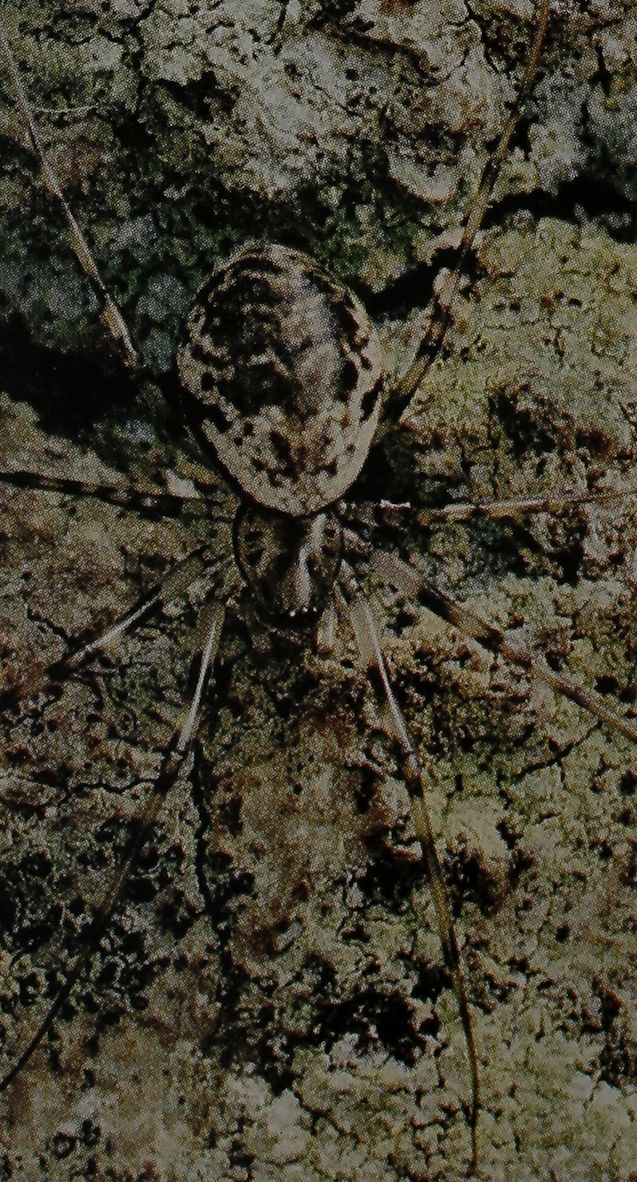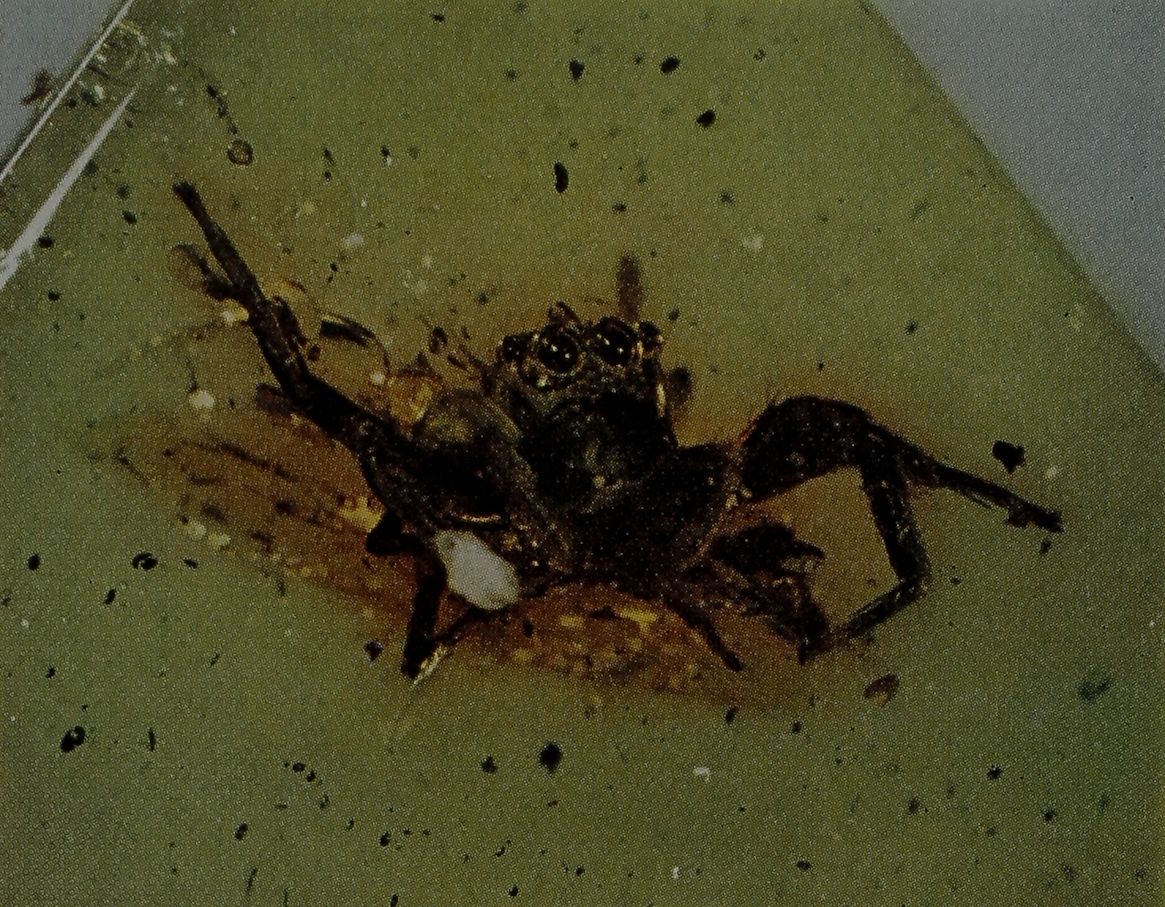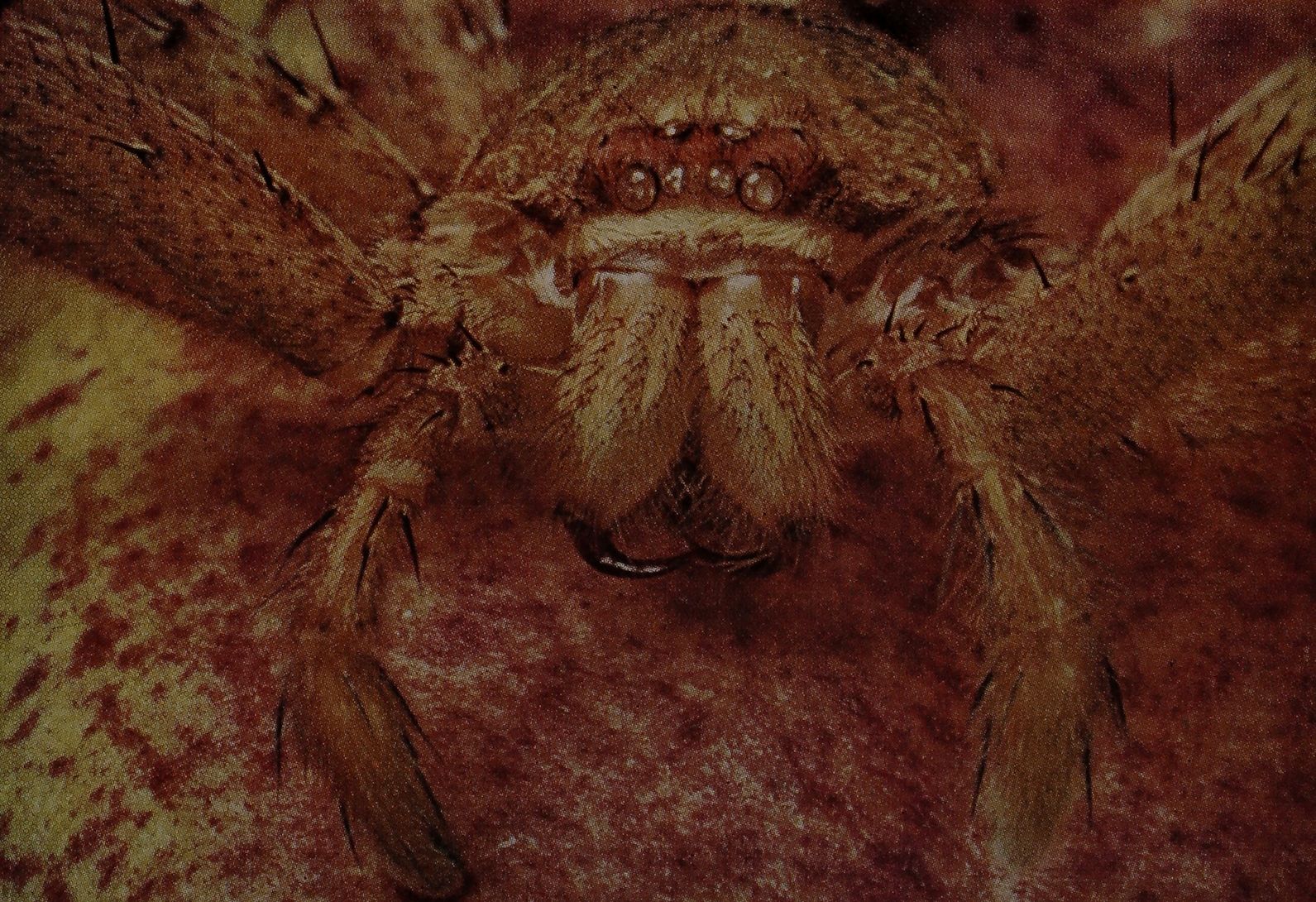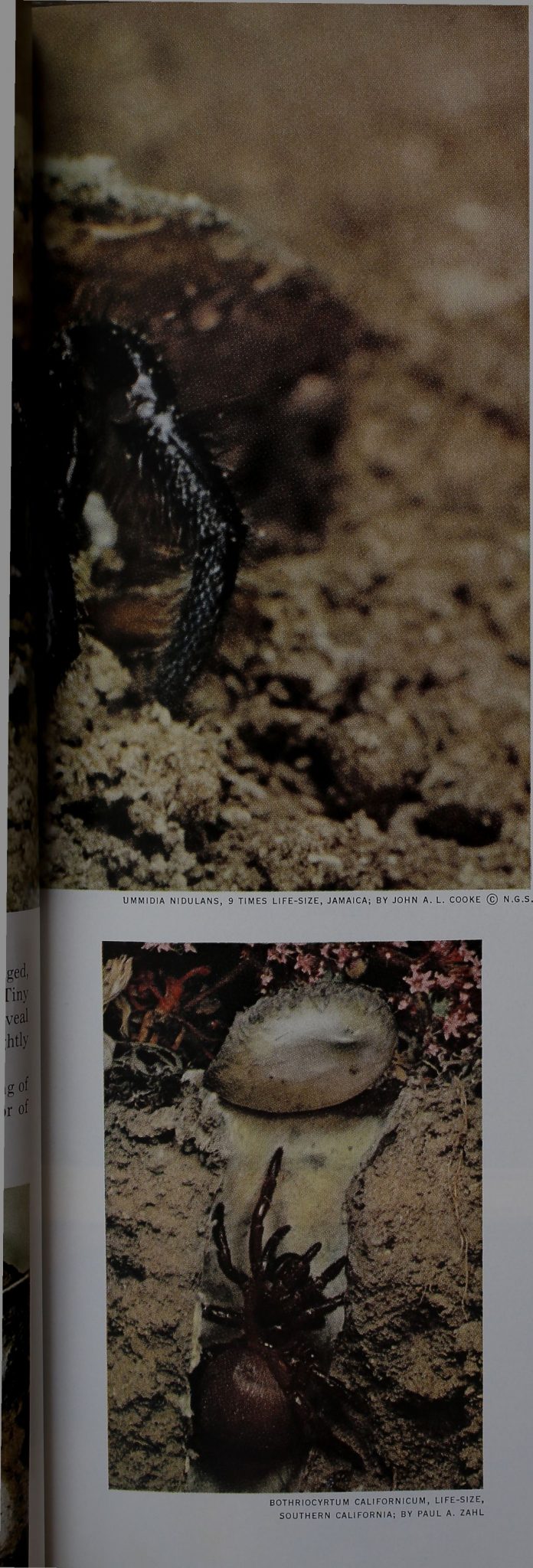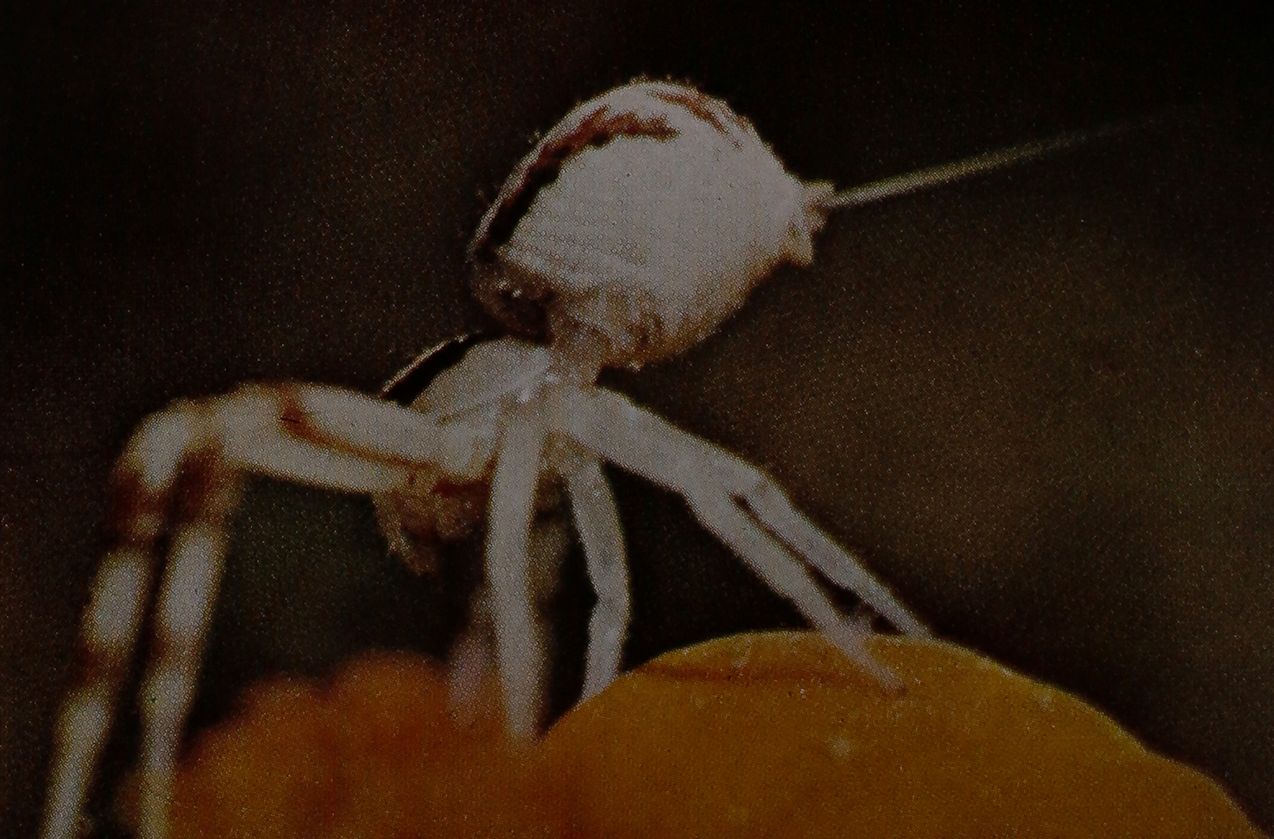Images Collection
View this article in Search Friendly Plain Text
NOTE: This plain text article interpretation has been digitally created by OCR software to estimate the article text, to help both users and search engines find relevant article content. To read the actual article text, view or download the PDF above.
AUGUST 1971
ii|QVg|¡QH
¡ ;^BffiNWun!8
Abo|É Spiders ?
ZAHL, Phí|¡l
NATIONAL GEOGRAPHIC SENIOR SCIENTIST
Spiders do N^ftNTiMiD^rf^ffl
Willis J. Gertsch. When I visited him
Kin his studio-laboratory at thUfoot of
the Chiricahua Mountains in south-
eastern Arizona, he dumped a live tarantula
from a glass jar onto the top of his deik. The
gray-brown, eight-legged – shaggy thinglS
neaffl|i theft^f^ of my fist—was clearly the
. stuff of which bad dreams are
“Biurihg É^pétirhe p|tfi\Si^^fc|‘eflected
pSAlhg and
resfiÉ»hg®||l? afestíéss creature, “I’ve beert
bitten by tarantulas of a dozen different
s’M^i^irAn|das Su ts’ee. and in
m«^rate|i|good healtbJa|
The big furry spider prowled iimuisitively
ÄrossHeMjäck of fias hand. “Regardless of
cfctlSued, “A taranfula bite is hardly worse
than 1> bee or wasp sting, unless you happen
fo»|ts|| a particular allergy. As a matter of
fact, some ants, bees, and wasps are far more
dangerous. But it’s the spiders that always
make the headlines.”
Dr. Gertsch had a point. Spiders are among
the most feared and maligned of nature’s
‘ among the mail] fas-■
cinating. An incredible number of species in- j
habit the world, but only a dozen or so can be
dangerous to man. And, on the other face of
the coin, nearly all do their part in keeping in-
calculable hordes of harmful insects in check.
Wind Wafts Spiders Far Out to Sea
One finds spiders almost everywhere—four
milesjH in the Himalayas, in below-sea-level
deserts, in ^^yÍMk§éÍíí8|Bmd burrowed
||feto He édipiKp Mariners fijave even sighted
them far at sea, drifting on th&wijhd, suspend-
ed from ‘fhrea#ik^“parachutes.”
TIM í averaéeMÉ&®f a »der spans only a
year, yet ,a taráfñ|ula may live as long as three
dec4§es,^Stake eight to ten years to mature.
Most spiders lead solitary lives, but a few are
social, with many individuals sharing a com-
mon web. Some species are as small as pin-
heads, others the size of dinner plates. Though
many people think of spiders as insects, they
are more closely related to ticks, scorpions,
and, remotely, to horseshoe crabs.
But chief among the marvels of the spider
is its mastery cif ;Änning.:^have watched 1
Spurred by hunger and guided by instinct, a garden spider wraps a grasshopper
in a shroud of silk. The efficient predator has killed the insect w|m a bite and now
will dine on its juices. Spiders have changed little from their ancestors of hundreds
of millions of years ago; they differ from insects in that they possess eight legs
instead of six, and have neither compound eyes nor antennae. Essential to the bal-
ance of nature, the world’s spiders—averaging at least 50,000 per acre in green areas
—annually destroy a hundred times their number in insects. Scientists have named
more than 30,000 species and estimate that four times that many remain unclassified; 1
human lacemakers work a spider-web motif
into handkerchiefs, napkins, and tablecloths,
but the result is clumsy compared to nature’s
often exquisite products.
Oddly enough, though, Greek mythology
attributes the spider’s skill to human origins.
An artful weaver named Arachne impudently
challenged the goddess Athena to a contest.
Later, shamed and mortified by her own con-
ceit, Arachne hanged herself. The goddess, in
a moment of compassion, brought Arachne
back to life, transformed her into a spider,
and made her noose into a web.
“Live,” Athena commanded, .. and that
you may preserve the memory of this lesson,
continue ho hang, both you and your descend-
ants»»! future times.” And so the name of
that superb; classical spinstress has been per-
petuated by scientists: Arachnologists like Dr.
Gertscm stfiply jthe class Arachnida and the
order Araneida—spiders as a group.
Dr. Gertsch ami^^y’ jboaxed his eight-
lagged friend, back into; its jar. tif¡ scLJ
entist, retired after many years as curator of 1
spiders at the American Museum of- Natural \
History in New York City, gave me a quick
refresher course on arachnid evolution.
“Spiders’ bodies and habits have become
adapted to harvesting insect food supplies in
a multitude of habitats. Most hunting spiders
prowl on the ground, relyihg mainly on 1
strength. Keen-sighted wolf spiders and j ump-
ers use sheer speed in overtaking prey. Aerial
“í^lurderous biting robber”: The translation of the
black widow’s scientific name, Latrodectus madam,
attests to the infamy of the little weaver (above). This
most dangerous of spiders usually bears a red hourglass
marking on its underside (left). One of about a dozen
species that need be feared by man, it occurs commonly
throughout mijst of the United States.
||®1he Pack widow’s venom—more potent drop for
drop than a rattlesnake’s—causes intense pain. Deaths,
however, occur from only four or five of the more than
.1,000; bites reported in the U- S. each year.
Only the female black widow causes human fatali-
¡*É@s. ßlptrary to the belief that gave her the name, she
4 does not always kill the much smaller male after mat-
ing. If hungry, however, the widow, like the females of
most spiders, will resort to eating her own kind.
As the body juices are
sucked up, lobe hairs filter
out spUd particles.
Curved claws and thick
barbed hairs at the tip of
each leg (inset C) permit
orb-web spiders to race
across silken lines. They
avoid entanglement in
their own snares by walking
only on the dry radial
strands and shunning the
sticky spiral threads.
The spider tugs thread
from the spinnerets by
snagging it with the saw-
tooth hairs and gripping
with the bent median
clawt The faster silk is
drawn from the body, the
stronger it becomes.
An orb weaver uses the
wind to set the bridge line
of its home (far left).
Dropping from the center
of a second strand
stretched across the gap,
it anchors a vertical thread
and quickly secures more
radial lines. Then, starting
from the hub, it puts down
a temporary dry-thread
spiral. That done, it
reverses direction and lays
down a new one of sticky
insect-trapping silk, while
rolling up the first spiral.
clear
¡I. a I OaEE1 M l^^|aS‘yiS
.;^^ñ?TOu^lv3\\ ait in
their webs for dinner to arrive, the ogre-faced
¿rtM¡ju jÄbvBne^KQflH
and flings the snare whenever an unsuspecting
name is
vi^jjl’c in |jM;s {laMKigr.anh.
argiofh: (below) rests head downward at the
hub of«r lyfetrly three-imt^d^jjftiiiT^^Bmi
er
adorns the ¿rife
tJBece
tion remains a mystery.
gS^t^awb’KxjmoHag dew, an orb wel^i’jÉW
rM|ls’ the beau t\ mfflrefe^sti@anchM¿y¿Ppf|
Goliath among spiders, an Ameri-
can tarantula calmly submits to a
close-up inspection by Arizona col-
lector Lorin Honetschlager and his
daughter Julie.
New World tarantulas—unrelated
to Europe’s Lycosa tarentula—retain
features of the most primitive spiders:
four lungs, jaws that move vertically
instead of horizontally, and minimal
use of silk. Some have legs spanning
nearly ten inches, making them the
world’s largest spiders. Despite their
formidable appearance, American
tarantulas pose no danger to man.
spiders have devised three-dimensional webs
within which they hang upside down (page
219), mazes of lines to entrap crawling insects,
and sheets and aerial tangles to intercept
jumping insects. And the orb weavers spin
round geometrical webs that efficiently en-
tangle flying or jumping insects.”
Dr. Gertsch’s own favorites are the more
primitive spiders: American tarantulas, trap-
door spiders, purse-web spiders, and the most
primitive of all, the liphistiids, little changed
since Carboniferous times, some 340,000,000
years ago.
Walking Factories Produce Varied Silks
In my own exploration of the spider world,
I found myself endlessly fascinated by the
orb weavers. The raw material of their gossa-
mer creations—a complex protein substance
—is manufactured by five or six spedH
glands in the spider’s abdomen, each pro-
ducing its own variety of silk. Acting sepa-
rately or in combination, these glands supply
dry or sticky threads for lines, cables, and
attachment disks for webs; egg sacs; anchor
lines; and swathing bands to bind prey.
The precise form of the filaments is deter-
mined by spinnerets—clusters of tiny nozzled
jets from which the spider draws the silk
with its hindmost pair of legs. The resulting
strands of spider silk are incredibly elastic
and tough—some can stretch more than 20
percent and are stronger than steel wire of
the same diameter!
For all its beauty and dewy sparkle, the
spider web is a diabolical achievement. To
be sure, heavy insects like beetles and wasps,
blundering into the snare, are apt to rip
right through. But for lighter prey, the sticky,
almost invisible network means death.
When delicate touch receptors pick up the
slightest impact of an insect on the web,
the spidef skims across it to paralyze the
victim with a single bite and binds it with
silk (page 191). The hapless insect will either
be eaten summarily—the body sucked dry of
its nutritious fluids, the remains discarded—
or left hanging in its mummylike wrapping
for a future meal. In his classic work The Life
of the Spider, J. Henri Fabre puts words into
the mouth of a simple garden spider, “We
must eat to have silk,” the spider exclaims,
K‘,we>mullfrhÉve sifÉ to,’ eat..:
Instinct alone controls the weaving. But al-
ter ever so slightly the spider’s internal chem-
istry, and the web will show it. I saw this
demonstrated one morning in the laboratories
of North Carolina’s Department of Mental
Health, which experiments with spiders in
one phase of a search for diagnostic clues to
various mental illnesses (pages 200-201).
Within an aluminum frame an orb weaver
was performing a sequence of rapid runs, j
ascents, and descents. Tattered remnants of
an earlier web stuck to one edge of the frame.
“Every morning we make her spin a new
web,” said Mrs. Mabel Scarboro, a research ■
assistant. “In the wild, a web seldom lasts
more than a day or so; it’s ripped by wind, or
insects, or even the movement of the spider
itself. Even though we feed this one, her in-
stinct tells her to keep her web in good repair
or she’ll starve.”
In half an hour a completed web filled the
frame. It was a circular marvel of straight
lines, angles, and more than 800 individual
; Cautious ‘but eager .té
■mission! in life—mating—a mJ^ta-
I rantula warily approaches the attack-
> ready female at extreme right Leglike
I palpi carry sperm, transfe^
pore ||£ his
He advances »y|i|h spurred forelegs
■poised. The fe«¡¡lé|§ii^
I legs, raising awésóme fangs- to, deliver
t a deatlwdealhglfh^
I can|^|ke,^fe’ mate*s
■ up, catching the fangs.,with Ids spurs.
I Thus protected, he forces her pipward^
I exposing a furrow on her abWomen in
I wkir.h .he.;A^.O^
Kpi¿ií-iiic*l’dW). ’
Drug trips for science:
weavers perform in thmaB%atory .
of the North Carolina Department
of Meri||t Health at Raleigh. Re-
search Director Dr. Peter
and his associates permit a spider
to
(lefte T|teñ Hjii$ apply a drop of
“spe@i|—the stftnulant dexedriné
sulphate—to the ^creatúre’s mouth
(right) Allowed.* to huiid another ..
web’íléenter^ an tÉif»lflÍ
irregular copy.p?aking information
from . pirotib|g^^
dexedrine-ipfluenced webs (bottom^
D® iW itt
‘»;fi^b®])uter Kjk compares .6(©©(1se-
. Such research revislÉ thaMeaeh
|fttug’ ■
characteristic changes in a spider’s
web-weaMjng activity AaÄeM
feirregular wilmä tranquilizers , and ■.
maiiiteáná^^^ll affifpS áñfiBiD,
more symmetrical webs—apparent-
ly because the druggeflipider is less
, Mstracted by Outside influentes.
By observing thi’ieffects ,q| drugs ^
:on spiders, .scientists :hf#i^|^litearn
more aboM -human biochemistry.
attachments, all engineered with mathemati-
cal precision.
Another spider of the same species was busy
spinning in a duplicate frame alongside. Ear-
lier, this spider had demonstrated its ability
to weave a regular, symmetric^ web. Split
now it had been fed a droplet of sugar water
containing “speed”—dexedrin© ililphai^S
Mrs. Scarbpro sprayed the two webs with
quick-drying white paint to make the threads
“”-stand out clearly. T1§||H saw^the^ stpSrge
angles and illogical backtrackings in the
weaving of the drugged spider. Laboratory
measurements would record angles, affixment
points, number of spokes, and other data for
computer analysis.
Experimenters have found that different
drugs—caffeine, mescaline, and LSD, for
example—produce characteristic variations
¡¡¡¡nm spider’sftwej||l|
SomeA-nUmám^m seem^toí be
accompanied by biochemical changes in the
blood or tissue fluids. Could such fluids, ad-
ministered to a spider,|||asurably infliu-me,|
its
perhapsiÄ^Be ter tell us—through the vary-
ing pattern^ of their webiSthe particular
illness affecting a patient, or even his progress
under psychiatric treatment. This is only one
potential of the experiments, which are still
in expMp|||iy-stag^S
Spider Responds to Strange, Vibrations
Researchers are on more certain ground in
the field of normal spider behavior. Dr. Peter
N. Witt, distinguished research pharmacolo-
gist and director of spider investigations at
the North Carolina laboratory, repeated an
experiment for me.
He tapped a tuning fork and touched it
gently to a web tended by an Argiope. In-
stantly she rushed across the strands and
furiously assaulted the quivering metal. With
her legs she pulled a silken stream from her
spinnerets, and in. seconds the cold prongs
were bound tight.
“A slave to innate behavior patterns,” said
Dr. Witt. “Spiders can’t alter their reactions,
can’t discern or evaluate subtle changes in
external influences. The vibration of a tuning j
fork or a thrashing insect—it’s all the same I
fhem.Hj
Perhaps even more instinct-bound than the I
orb-web spiders are two enemies I encounB
tered while spider hunting with young Nicho-1
las Eltz, who was then helping scientists atl
th||American Museum of Natural History’s®
Southwestern Research Station near Portal, I
Arizona. Nicky’s terrariums already held afl
Mjfzen tarantSlits,
Battle’s Outcome Rarely Varies
-The sif^Bagii set and%he desert was losing®
its daytime heat as I drove slowly down a I
twisting roadway across rolling terrai»
■’ covered with sage and cactus. Nicky perched*
on the hood, a flashlight in one hand and a I
wide-mouthed jar in the other. He had ex-1
|[[Hlné(f¡j|Hfy’ atMusk in summer tarantulas I
«j¡|velpéir ho¡|¡¡ to fdrage or to find mates*
“After dark it’s cooler, and they’re also safe I
from pompilid wasps,”
Abrújltly, Nicky -signaled, me ttjstop. He I
jumped off the hood* ran ahead, and suddenly®
to H® knees on the macadam. In the
headlight glare I saw him scoop up something I
with his collecting jar. A moment later he I
was back with his prize-^a tarantula with a I
body thicker than my thumb, a leg spread of ■
five indjOfeand two formidable black fangs. I
We ’Ragged six mhpjÉ specimens’ within anl
hour, then returned to the research station.
Earlier that day we had netted a metallic- 1
blue, topaz-winged pompilid wasp and re- 1
leased it in a glass terrarium partly filled with 1
desert sand. Now we dumped one of our new- I
ly captured tarantulas in with the wasp.
“First they’ll wrestle,” Nicky predicted, I
“but the outcome is usually the same.”
I watched the unequal struggle, the keen- I
eyed wasp circling like a gladiator and sizing I
up the near-sighted spider, which could as- I
sume only a threatening attitude until touched. I
The wasp quickly broke through the spider’s I
guard. With a lightning-swift jab, she sank I
her stinger into the tarantula between its I
third and fourth leg sockets.
Nimble crab spider haunts a
plant laden with delicate blosl
soms (right?). Named for its
ability taf* scurry sideways and
backwards, the little hunter can
turn white, pink, or yellow to
blend with vegetation.
In a mini-jungle of stalks and
stems, a green lynx spider snatch-
es up a victim. It trails a dragl
line—a safety thread anchored at
intervals—that most spiders put
down as they move about.
PEUCETIA VIRIDANS, 2 l/4 TIMES LIFE-SIZE, XYSTMlfslG^ISTMCTM 3^MES l$|$E-S|Z;E, ^ROPE:
S0UTHERbYuJAme™AnV,™Í¿ardEkÉrn Ready-for-dinner stance: A hungry crab spider waits ■
motionless for a flying insect to approach. When a
victim draws near enough, the legs snap shut and the
predator delivers a killing bite. Equipped with par-
ticularly potent toxin, these spiders readily attack
wasps and bumblebees much larger than themselves.
dark places nearly every-
where’ in |#^g^l|if§ed cellar
fojuml^This one (left)
BjH than most species, cellar
: ‘^áÉ^fc their webs will. niallsj ■’
■ lajE^Byj« iftt^
11olding recently hatched young.
violently
v^^teíth’é^p^ebs when alarmed, but
*\\ hr i«iff-,i’t eás ¿hey :
i I’l^jPjr^^^-lu^Tii kname
relatives, the harvestmen (page 211).
-1I¡É her preÉ||i^“to-be
■WEfeMH^Pv-1 mEh^MP^wm Sj^tder
(above). Crouched defiantly «| her
iipmaM^K. every as
HHBfflKj?.. This
‘ Zahl slit the co-
edon with scissors té expose the eggs.
Usuall-yr;: hd^ever, the crab spider dies
of old age before her babies emerge.
For a seconds me wasp held her
de|»f. thrust, apparently discharging a full
Sd’se^of tra®piffizep Then she withdrew’her
steppfd!^’flbac%|. and
, waited. The trán^Mize r worked rapidly.
ij«iii^^B«i^wpss iillrier was tenstimes the
wasp;seized- onedfl
l|pe tarantula’s legs in her jaws and tuggedl
the gray-black hulk across the sand to a hole]
she had dug eapler, SÄ hacked dc^Mt|^
h»,’pS§ÉJ h^iitrdi^in after her.
fpl already ktoteJW the last act of Jpis drama. 1
back – unmer-1
ground, the wasp would lay a single eggMnl
the anesthetized spider’s abdomen, «lia
return to the surface and plug the hole witM
sand or pebbles. The tarantula is thus literally i
buried alive for weeks. When the wasp’s egg.]
hatches into a squirming larva, the spider]
serves as |a food supply. This small, savagel
iritual helps control the tarantula population
—a necessity even with a creature so s||plN
i harmful li
Even the noiOrious:liackj^MI^^ f.mtrn-
\ dectus, of world-girdling rangé| accounts Ifpr
‘ surprisingly few Shuman fatalities. Of 1,000
■ cases of black-^dowmiite llfepiiried^Éh^re
United States each year, SSwos five are •
I fatal. ‘• Black-Wlllw’ venfeia^pSf \IÄÄ: ‘ghi
I antivenin was developed 25 -years ago~cani
produce such symjatems asy cMlls, n^&sea,
pain, hypertension, breathing^Séui^lifl and
Imuscle cft^pi^S
Trash Heaps AreHo»e:t0;;^p^^?f|i^ws
I In the company of Lorin Honetschlager, an
I animal collector wh|> some y|#fs parlier »ad’
1 helped file find seorp»ns,* I learnea^aMÍrst-
\ hand much of what I know of filack wi$pyys….
■.Last summer.- iitffeng’B 1pí^^pft|ni|0ÍHHfe ¿
lubuflÄ^lloiae mear Phoenix, Arizona, Lorin
lauifti.-.^in^ t^i Ié» I thought Latro-
dee’tm was a scarce spiqfer. “Widows?” he
minutes I’ll shcwj|§u hundreds.”
– We walked down the street to the backyard
of an abandonedKihouse where a trash heap
Ä»i^wäste paper’, tin
cans, and r@fii®tg^U«lier, we found a tangle
central
tube-shaped netting harboring a shiny black
eight-legger with’a pea-size abdomen marked
underneath with the scarlet figure of an hour-
■fglasstoages 192rt3|É|
World and
powerful poison^
• will ‘bite. ||fhriri ^Maiíid, only
¡when IjxééSsiylp pgé&he’d—that at, when
*See in National Geographic!, “Scorpions: Living
the Sands,haul Á, Zähl, March 1968. ;
Prickly “face” scowls from the back of a
humped orb weaver. Many spiders display
such elaborate markings. “Eyes” and “nos-
trils” in this bird’s-eye view actually indicate
the attachment points of internal muscles. The
spider’s legs conceal the real face.
GENUS ARANEUS, 9 l/2 TIMES LIFE-SIZE, NORTHERN HEMISPHERE;
BY PAUL A&gAHL © N.G.S.
Hidden in full view, a drab ogre-faced spi-
der avoids enemies by simulating vegetation
(right). It maintains the twiglike position—|
long legs stretched out fore and aft—while
it sleeps away the day. At night it awakens
to hunt for food.
DINOPIS SPINOSUS, I 3/4 TIMES LIFE-SIZE, SOUTHEASTERN U. S.;l
BY JAMES AND RICHARD KERflf
Life-saving ||||micry protects this jumping
. Slider ants distaste-
ful. M®t i^fejmitatilg spiders even copy the
” movements of tWt models, ^»•il’i’cn waving
anife^d^i When disturbed,
^^»|ver, they abandon pretehse and flee.
Spiders’ look-alike kin, the harvestman—or
lladdy loftglegs—has only two eyes, usually
mounted atop a short, round body. Able to
regenerate legs, it readily sheds them when in
¡danger of capture; this one has lost two.
Blotched costume conceals a cryptic bark
spider as it stalks down a lichen-covered tree.
Where polluted air has blackened tree trunks,
darker spiders have evolved.
Lurking lady of the meadows
(top left), this shamrock spider
normally stays hidden in a re-
treat of folded leaves positioned
near her 2V2-foot-wide orb web.
A taut trapline links hideout
and snare. When an insect
strikes, the trapline transmits
the vibrations of its struggle
from the web to the spider, who
rushes in for the kill.
Pear-shaped and berry-bright,
this Jamaican orb weaver
(above) displays apparel befit-
ting its tropical habitat.
uncomfortably unmernfnW
squeezed, or when^^^’|3^^^Eoleri”fl^E|S
turbed. With long chrome tweezers we picked
iff a |pz;eh|if the¿dÍB^^deladip^Vfe^^^E
silken egg cases shaped like little marbles,
Imp s^eral 3at$^
are and pose no Kiip^ph’a^
Back ffifthe laboratory I had improvised in
qhap-
pened. As I was traifáferring the black widojffl
her
ni^‘i1 < 1 up my
Wtm to the eltói^^pS|ié^^^^^^^Mwv¿’Uí-;
vey this new world of h
^fcir^i eay||wEw.iK’^^^HW 1 ejl^I^H frpm
comfortable.
»Trying not to move my right arm,
ly reached with ffoggHftpen jar on
a nearby shelf.
who Slid, if she chose, bite me at any mo-
ment. Maneuvering ever so carefully, J gently
^axed the venomous creature baflvfiH^E^
ri ty^;th^|,r.
Bp|n ‘’Stjio vy;ii~7Unic‘«i
pet upon and imme*dMijS killed .theffi^ivjS
moths, and other insects I dropped ihto her
npiliam; The action seemed just as bmi^H
purposefulS the prb-^^pi<m^®E^^™
^Kbrating tuning fork. The widouli^^^S
pertly twirled her victims into silken shrouds
■¡■g them .wjjjjRy- he ä t l^i^
visions for tWéafiuMa^^B
Gleaming Eyes Betray Prowling Wolves
I drove o.ut^^n
the desert east of «fe^É||Wthe habifaj of
A mem-
Epr of the)>hunting group,1 tiling cfqútug¿
|||fes-. he1i’)\Sul^iHlÉliÍÉ
sand, bits of bark, twigs, leaf fragment)
and grass.
Hffl»Rig no use whatever of the web-snare
and night,
^stimoving wolf spiders stre.äk;^^^| .¿the
ground in pursuit ,We found them-
easily, ¡íty?f¡ in their
«pbhs tgJów<edJM the headii^feWl’Sny ^autoj
mobiles, and glare they
B§Med■ to freeze in
One sp^^ÄM^^opean wolf spider,
^^^^^tarentui^y pvo^^^^^d
^^na^city^f^Taranto, popular
[folk danc|. It wps once thought that the effect
SpMl|Ä hfl#;.->f^Äll||f not serious)
jppuld be shaken off by dancing wildly, hence
:ll^biMte<ii^^^^pi )l NnitPihaRmiyBM
IS-name,
African tarant«|H
j^&ihother
^{^aBamily AseleMl^^wlh^ novel traH
■At^|]|^entranany cranny ^she
^^MÍ^’a^Mhd”\bf^tarbauliñ,:^i>’‘ a céh’trah
funnel-like onening^w^^hM^Min wait.
p$3|n| the bac’kyaMiof my home in Wasn^ffl
ton, D. C., stands a wall of unmortared
H||||in ^^^H^.spid^^pvfijthis family li^
uiwi T
thenr,jfe|Si^r. toll of harmful
garden .^^^^piust faMgs. .Many &
summer evening after dark I have placed a
chair feet fj^iÄe wall and, with
lili» farra session of’;
spider watching. ..
Playing Catch With a Hungry Spider
v©h.é‘‘-‘mght I came with food—live insects
«ÉeáyehirilBtri n-.*l l@{Smwre bham Of my
■flashfpih|^|)únd the mqutMf a funnel whet|fi
■ÉlSl ilÉlyl^fe^^and tense, sat a gráyi®|
spider with ceHmHHH^^Vhen I made
a sudden ’md^vfogwaÉd^ with ffiq flashlight,;
ogs^ror a second
&fi two. ^wa^tied until l|R^|^SggH was.
¿’lftaara- jtlfen^itjq^eaa a fly
^e’b fiHm^É»^ffir»»Éi^áÍTOches
from |he- fifcÉÉéfcM
streaked from ambu^h,T®§Ée the catch, and
^.i^fahea^fflflhack info the funnel. .
Many hunting^^d^rs^have large, efficient
are the
jumping spide^|f^|lÄalticidae). Although
í^sualí^ quiteS small ahJ|^har.m,l^^;o man,
atnp^riolíliVjMilored ÉÉlWrs leap upon insects
SA^S^@Ri^aLrer-\ j qfóleqpards. ‘$. species of
|¡iímpeF^BP)e’feh fou^^^^MKeet up on
Mount »EÄothe?s’ Infjmwland gar-
plths and wild wqq;i^|áÉ
Several of the hunti^Éfeaic ants in’ agN|
pear anee and habit (page 21 wome can buzz
like bees^^B^quirt out a viscous substance
‘fe entangleprey.
One of the, st’g^dges^qfj»^ hunters, the
jfefeáSjsffipider (Dolóme d$s),Jk. at home in two
HHg^Épaiez^JBl^nly can the fishing qpider
run across ,wa¡f>É^^S^ may remain |l|B
&ii^ifefor as lpng as^an hour,Mlding onto
bottom debris in quie’t streams mid ponil.^ ^
*Tkis remarkable f§at by sQ^pé an(f aquatic
insects was dps^fibed in “Teeming Life of a Pond,” by
WiltÉglH. Amos, National GEóGiuvpmc,%^^b|^®¿
Misstep 35,000,000 years ago mired this jumping spider
in resin, which hardened tt«amber. The oldest fossil spi£jS
der predates him by more than 315;0,@0,0@0 years.
Nemesis of smaller creatures. »Ine, wolfífepider
rarely threatens humans; if handled carefully, the hunter
can make an interesting pet.
For spider collectors who want nonliving specimens,
nature provides plentiful and perfect facsimiles such as
this featherlight exoskeleton (below) abandoned by the-
animal when it molted. Spiders must discard their skins to
grow, andjpthey do||||at least once even before emerging
from their egg sacs. lljllr to Ä|||ti times in all,
reaching sexual maturity final Few
spiders live more than two years, and the males, who dié^*
soon after mating, rareKy surviye.
Peekaboo predator scouts for food fro©fo}the
entrance of her underground home (above). If an
insect passes near enough, the trap-door spider
will lunge at it, usually keeping the door propped
open with her back legs to ensure a safé retrc’áíff’
Using comblike rakes on the jaws, the builder of
a trap-door nest such as the one being probed byS
Kathy Wilson Rottschafer (below) digs a hole
five to eight inches deep, then caps it with a hinged,
beveled door carefully camouflaged on top. Tiny
punctures on the inside of the door (below) reveal
h|3W>’the spider uses her fangs to hold it tightly
shut against intruders.
After waterproofing the walls with a coating of
I®»? Wl***.’ tb* spider lines the interior of
with soft silk (opposite).
A bubble of air held under the body enables
’ ’it to^piop;;||^the surfabÉ at ijidll. Insects are
its usual prey, but some species capture
small fish and tadpoles (page 203).
Even more remarkable, the water spider
Argyroneta—a native of Europe and Asia^^f
builds a diving bell underwater. The spider
first spins a submerged web platform, then
carries down small hir bubbles from||he sur-
face to fill it like a tiny balloon. She spends
virtually her entire life in or near the bell,
adding new air whenever needed. Argyroneta
even lays her eggs within the bubble, and
hatchlings stay there [»til ready to set ©(ut
IS^lagir own. ‘
Camouflage Hides a Hunter’s Lair
Trap-door spiders are unique by virtue of
their ingenious dwellings. One spring I found
myself in the hilly country east of San Diego,
a haunt of the Cali-
fornia trap-door Bothriocyrtum californicum.
Here my field collaborator was Kathy Wilson
Rottschafer, a student of biology at San Diego
State College, and a trap-door specialist in
[R making.
“When they’re closed, the traps are so per-
fectly camouflage® that we’ve probably
stepped on dozens already without knowing
it,” apologized Kathy. We were searching a
little.arro1v<| strewn with yellow spring flow-
ers. Here and there lay patches of bare earth
where, onejeould examine the surface square
inch by square inch.
For ten minutes ffl scrutinized the ground,
^Eskin-g fo’l isomething j had previously seen
only in photos, ffl’hen I heard a cry of triumph
.frpitaa Kathy^gfeg pointed .to a hair-thin ire
barely visible on the surface of the soil,
fflpffay ^^feyb^^our pocke;£knife, .please?”
■ ihe asked. With a surgeon’s dexterity she
eased the blade ulper the edge of the inch-
wide door and pried gently. There was no give.
“A’ spider’s in’ ‘there, all right,” she said,
i *Sd jija&t under the door, holding it shut.
Surprising how strong they are.”
She thumped the ground gently and the spi-
der let go. With the blade she lifted the trap-
door—a thick cap of tightly compacted silk
and dry soil. Its beveled edges might have
been fashioned on a lathe (left).
The young arachnologist beamed. “There
you are. And six or eight inches down at the
-bottom of the shaft is the lady of the house.”
With sharp rakes on each of its two jaws,
the spider had excavated a neat vertical shaft
just wide enough for her body; she had coated
its walls with saliva-moistened earth, and
covered them with a sheet of tightly spun silk.
Finally she had woven the hinged and cam-
ouflaged trapdoor—her shield against a
hostile world.
She was now safe from most of her enemies
but still vulnerable to the pompilid wasp—
nemesis of all members of the tarantula grpup.
When such a %a$p locates a trapdwr-, it
chews through the cap or simply rushes in
if the spider lifts the door too high. Once in-
side, the wasp engages the spider in the same
unequal contest I had observed against the
tarantula in Arizona. Then the insect departs
through the now-unguarded door.
The trap-door spider designs her abode not
only for safety, but also as a shelter from sun,
rain, and tt^p^iis her parlc^haóra
her nuptial chamber, and a nursery for her
young. Seldom if ever does she leave its con-
fines, and even then ventures out only a few
inches to capture crawling insects.
Indians Believed in Spider Power
Greek mythology gave us Arachne. Other
myths deify the spider. “To the American In-
dians,” writes Dr. Gertsch, “the Spider is a
creature of
Dakotas “the orb web is a symbol of the heav-
ens … from the spirals of the orb emanate
the mystery an#power of thfei, Great SpirlÄ
And the lines connect sky and earth on which
an “… Algonkin maiden, fallen from grace
as wife of the Morning Star, is sent back to
earth.” To certain Southwest Indians, the
original creator was a spider; to others, weav-
ing was introduced by a spider woman.
Quaint myths. But where do spiders fit into
nature’s plan, and into the World which man
has superimposed on nature?
To begin with, the arachnid line goes back
400 million years to the first land-dwelling
invertebrates. Ages of adaptation followed,
during which spiders infiltrated almost every
climate and every ecological niche.
Housewives are aware that any closet or
dark corner, even on the thirtieth floor of 1
a New York apartment building, if left un- i
swept or undusted for just a few weeks, will
inevitably develop cobwebs. How they get ]
¡flere strains one’s imagination.
Gossamer Webs Capture Morning’s Glory
ffit only are spiders found almost every-
where; they exist in incalculable numbers. ¡
Sampling techniques have revealed some
64,000 spiders in one acre of meadow in a :
Middle Atlantic state and a quarter of a mil-
lion in an acre of tropical forest. The world-
wide count would be beyond comprehension.
Tfee spider’s marvelously inventive modes :
are fueled by strictly carnivorous habits
which, although deadly in the insect world,
are man’s distinct blessing. Man must live
on what he grows, and thanks in part to
his eight-legged friends, destructive insects
are held in check. It seems ironic that such a
benefactor should typify ugliness and con-
note menace—should have, as the nursery
rhyme has it, “frightened Miss Muffet away.”
Early one September morning on a New
England hillside, I came upon a patch of
mountain laurel in which scores of orb webs j
»ere strung. Their silken fibers, moist with
dew, caught the rays of the rising sun, and
|m| glitter was dazzling (page 197).
Perhaps a similar enchanting encounter in
1715 inspired 12-year-old Jonathan Edwards,
the future Puritan theologian and scholar, to
pen ;what I think of as the best tribute to
man’s plentiful eight-legged friends. (Edwards
could not have known that a century later
scientists would decide that spiders are not |
‘ insects.) ■
“… every thing belonging to this inspf’’ 1
wrote EdwardÉ “is a^piÉjffle….”

